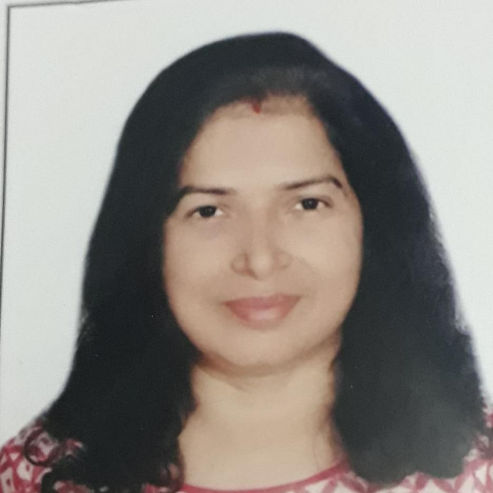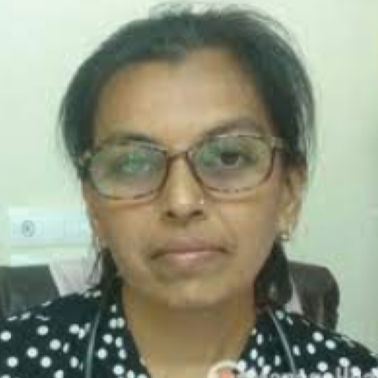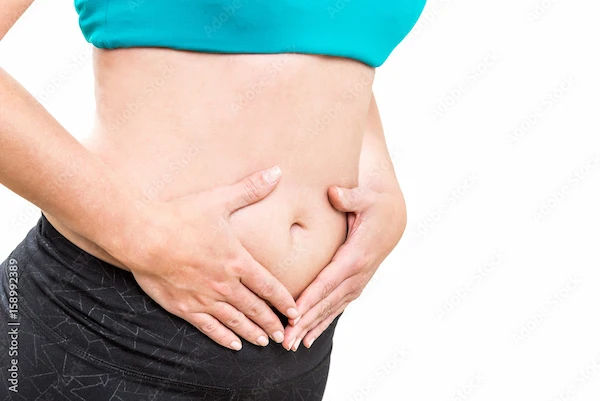Breast Pain (Mastalgia)
Learn about breast pain (mastalgia), its causes, symptoms, and treatment. Get tips on prevention, lifestyle changes, and when to see a doctor.

Written by Dr Sonia Bhatt
Last updated on 3rd Jul, 2025
Breast pain, or mastalgia, is a common symptom in women of all ages and can be worrying. Most of the time, breast pain is benign (not harmful,) but sometimes it can be a sign of an underlying condition.
This article will discuss everything you need to know about mastalgia. We’ll review the types, causes, and symptoms and guide you through diagnosis, treatment, and prevention tips. You’ll clearly understand what’s going on and how it connects to your overall mental health. Let’s break it down together!
Definition and Types of Breast Pain
The breast is made up of glandular tissue, ducts, lobules, fat, and connective tissue. The mammary glands produce milk, and the ducts transport it to the nipple. The breast is also sensitive to hormonal changes, which can cause pain, especially during the menstrual cycle or pregnancy.
Breast pain, or mastalgia, can be divided into two categories:
Cyclical Mastalgia: This type is hormone-driven and occurs with the menstrual cycle. It’s a dull, heavy feeling in both breasts, usually in the weeks leading up to menstruation.
Non-Cyclical Mastalgia: This type is not related to hormonal fluctuations. It can be caused by injury, infection, or changes in breast tissue.
Causes of Breast Pain
Hormonal changes are the main cause of cyclical breast pain. As estrogen and progesterone levels fluctuate throughout the menstrual cycle, they can affect the breast tissue and cause tenderness and swelling. This type of pain usually peaks before menstruation and resolves after the period ends. Pregnancy, perimenopause, and hormone therapy can also cause similar discomfort.
Non-hormonal factors can also cause breast pain:
Injury: Trauma to the breast, whether from a direct blow or vigorous physical activity, can cause localised pain.
Breast Cysts: Fluid-filled sacs in the breast can cause discomfort, especially if they grow bigger.
Infections: Mastitis, a bacterial infection that often occurs in breastfeeding women, can cause pain, redness, and swelling.
Fibrocystic Changes: This is the development of lumpy, non-cancerous tissue in the breast, which can cause pain and tenderness.
Symptoms Associated With Mastalgia
Cyclical pain is one of the symptoms of mastalgia. It occurs in both breasts and can vary in intensity. It’s often accompanied by swelling and heaviness, especially in the upper and outer parts of the breast. The pain subsides after menstruation.
On the contrary, non-cyclical pain can be sharp, burning, or localised to one part of the breast. This type of pain does not follow the menstrual cycle and may be related to other factors like injury or infection.
Breast pain can also be related to its anatomy. For example, pain can be felt if there’s a growth or lump or from stretching of ligaments and tissues during pregnancy.
Consult Top Gynaecologist
Diagnosis of Breast Pain
Your doctor should start by taking a detailed medical history and asking about the onset, duration, and type of pain. They will also ask about your menstrual history, birth control use, and any previous breast issues. Then, a physical exam will be performed where the doctor will palpate the breasts for lumps or areas of tenderness.
To rule out breast cancer, imaging tests like mammograms or ultrasounds are done. A mammogram is good for detecting changes in breast tissue, whereas an ultrasound is great for differentiating between solid masses and fluid-filled cysts.
If the initial tests are not conclusive or if there are abnormal findings, further tests like biopsies or MRIs may be needed. These tests should provide you with more information about the nature of the lumps or abnormal tissue.
Treatment Options for Breast Pain
Some women find relief through lifestyle changes. Exercise can reduce hormonal fluctuations and overall breast health. A diet low in caffeine and fat may also help with cyclical breast pain, as these can worsen the discomfort.
For more severe or persistent pain, over-the-counter pain relievers like ibuprofen or acetaminophen can help with symptoms. For hormone-related pain, birth control pills, progesterone therapy, or selective oestrogen receptor modulators (SERMs) may be prescribed to regulate hormone levels.
When to See a Healthcare Provider
See a doctor if you have any of the following signs or symptoms along with your breast pain:
Severe or Sudden Pain: If the pain is severe or sudden, it could be a more serious issue that needs medical attention.
Lumps in the Breast: Any new lump you can feel in the breast or underarms should be checked by a doctor.
Redness or Skin Changes: Redness, warmth, or swelling in the breast could be infection, inflammation, or other underlying conditions.
Nipple Discharge: Unusual discharge from the nipple, especially if it’s bloody or clear and not squeezing should not be ignored.
Pain that Doesn’t Go Away After Menstruation: If you have cyclical breast pain that persists beyond your period, it might be non-hormonal and needs to be checked.
Pain that Gets Worse Over Time: Pain that gets more intense or frequent over time could be an underlying condition that needs attention.
Lifestyle and Home Remedies
Managing breast pain, or mastalgia, can often be done with simple changes at home. Start by adjusting your diet. Cut back on caffeine, salty snacks, and fatty foods, as they can worsen the pain.
Keeping a healthy weight with regular exercise and balanced meals also helps your hormones stay in check. Stress can make the pain worse, which is why it’s important to manage it. Try relaxation methods like deep breathing, yoga, or meditation to calm your body and mind. These small changes in your daily routine can go a long way in reducing breast pain.
Prognosis and Complications
For many women, breast pain will resolve on its own if it’s related to the menstrual cycle or hormonal changes. For those with chronic or severe mastalgia, ongoing management may involve a combination of medication and lifestyle changes to prevent recurrence.
Most mastalgia is benign, but persistent or severe pain can affect daily life, mental health, and quality of life. You need to address the underlying causes of the pain and seek advice to manage symptoms.
Prevention Strategies
Self-examining your breasts regularly can help you detect any unusual lumps or changes in the breasts. A healthy lifestyle, regular exercise, balanced diet and stress management can help keep your breasts healthy and reduce the likelihood of breast pain. Here are all the tips to sum up this discussion:
Self-Exams: Check your breasts regularly to spot any unusual lumps or changes early.
Proper Bra Fit: Wear a well-fitted, supportive bra, especially during physical activity.
Stay Active: Regular exercise helps balance hormones and maintain breast health.
Balanced Diet: Eat wholesome foods and limit caffeine and salty snacks.
Manage Stress: Practise relaxation techniques to keep stress-induced pain at bay.
Track Your Cycle: Monitor your menstrual cycle to understand pain patterns.
Stay Hydrated: Drink enough water to reduce fluid retention and tenderness.
Consult Your Doctor: Seek medical advice if pain persists or feels unusual.
Conclusion
Breast pain is a common problem that can be caused by hormonal changes or other factors like injury or infection. While most are benign, understanding the causes, symptoms, and treatment options is vital to managing the discomfort. With proper diagnosis and treatment, most women can get relief from mastalgia and improve their quality of life.
But remember, early diagnosis and treatment is a preventative measure in the first place. To sum it up, if you have persistent or severe breast pain, see a doctor for a check-up and treatment.
Consult Top Gynaecologist
Consult Top Gynaecologist

Dr Swatika Kumari
Obstetrician and Gynaecologist
19 Years • MBBS, DGO, DNB Obstetrics & Gynaecology
Nashik
Apollo 24|7 Clinic - Maharashtra, Nashik

Dr. Priyanka Surisetty
Obstetrician and Gynaecologist
8 Years • MBBS, DGO
Visakhapatnam
Apollo 24|7 Clinic - Andhra Pradesh, Visakhapatnam

Dr. Shailaja L
Obstetrician and Gynaecologist
16 Years • MBBS, MS
Bangalore
Apollo 24|7 Clinic - Karnataka, Bangalore

Dr. Asha Rani Singh
Obstetrician and Gynaecologist
24 Years • MBBS DGO
Delhi
Dr Asha Rani Singh Clinic, Delhi

Dr. Mona Yadav
Obstetrician and Gynaecologist
19 Years • MBBS, MD (Obstetrics & Gynaecology)
Dombivli
Nulife multispeciality, Dombivli
Consult Top Gynaecologist

Dr Swatika Kumari
Obstetrician and Gynaecologist
19 Years • MBBS, DGO, DNB Obstetrics & Gynaecology
Nashik
Apollo 24|7 Clinic - Maharashtra, Nashik

Dr. Priyanka Surisetty
Obstetrician and Gynaecologist
8 Years • MBBS, DGO
Visakhapatnam
Apollo 24|7 Clinic - Andhra Pradesh, Visakhapatnam

Dr. Shailaja L
Obstetrician and Gynaecologist
16 Years • MBBS, MS
Bangalore
Apollo 24|7 Clinic - Karnataka, Bangalore

Dr. Asha Rani Singh
Obstetrician and Gynaecologist
24 Years • MBBS DGO
Delhi
Dr Asha Rani Singh Clinic, Delhi

Dr. Mona Yadav
Obstetrician and Gynaecologist
19 Years • MBBS, MD (Obstetrics & Gynaecology)
Dombivli
Nulife multispeciality, Dombivli

